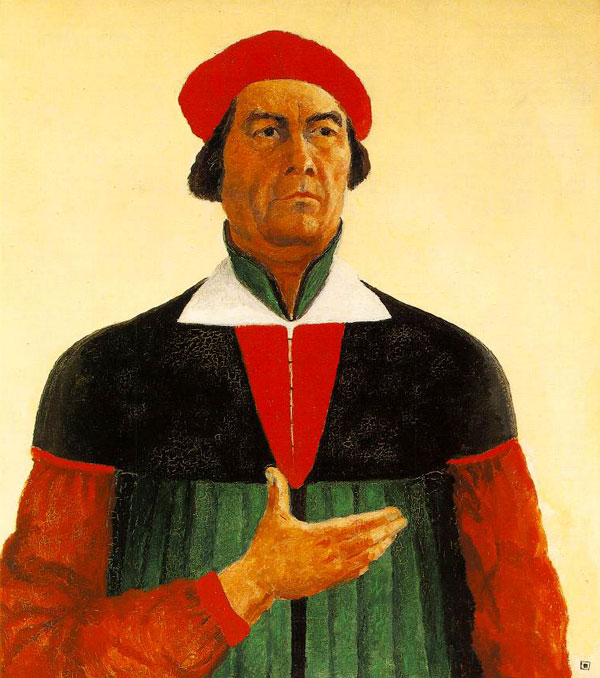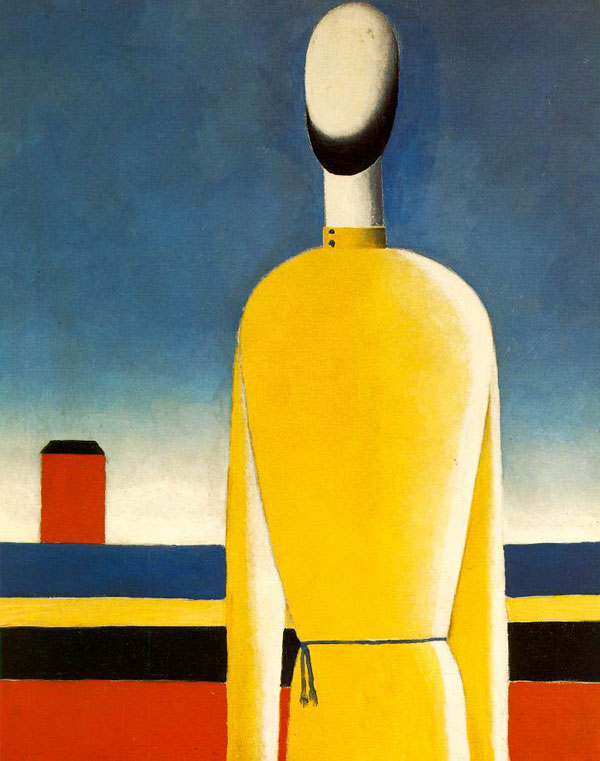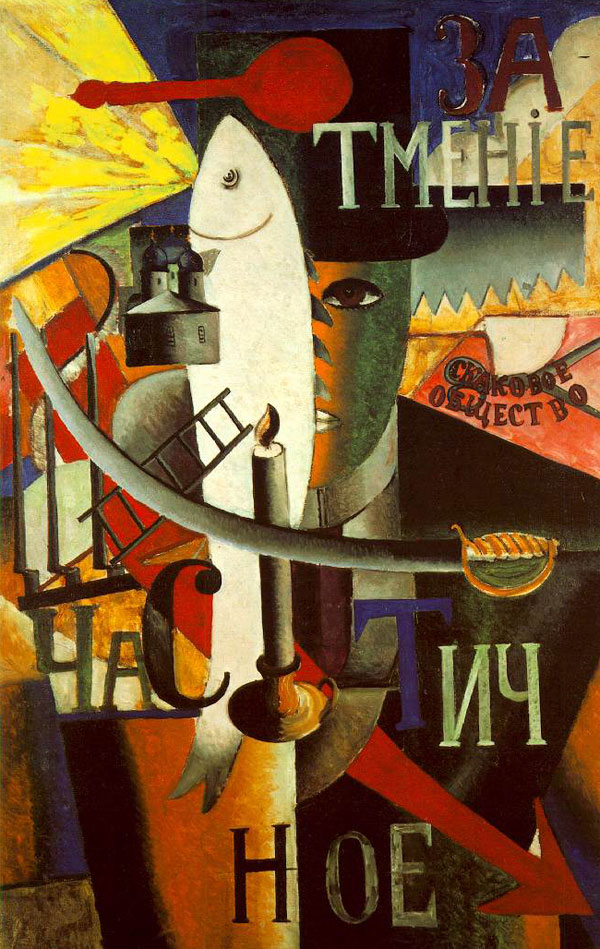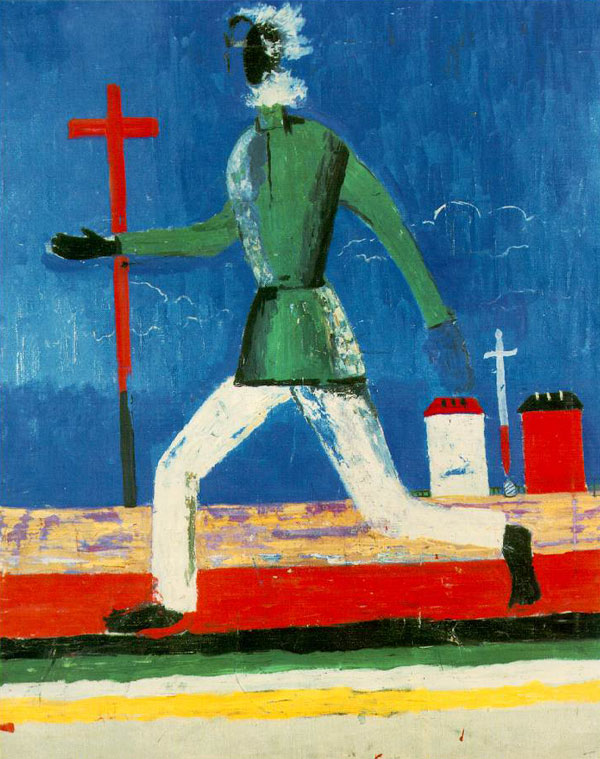Dear Artist,
In St. Petersburg you don’t want to order your vodka with orange juice. It’s considered a “waste” and servers will frown at your lack of couth. You take the classic shooter straight. Cruising Russian art of recent times also reveals other ways of doing things. The strong academic tradition holds valuable techniques not always seen in the West. While there are lots of “flat” and “slick” trends, there are also attractive impasto tricks.
One of these is called “punching.” Spent or nearly-spent oil or acrylic tubes are opened up from the bottom and reloaded with newly mixed or partially-mixed pigment. A small (often irregularly shaped) hole is then punched in the lid or sometimes on the tube’s side. The tube is then dragged and squeezed like toothpaste to create a sinuous and variable raised line.
In oil — the medium of choice — the use of palette knives, trowels and plastics together with brushwork is common. A painter told me that this was the main use of credit cards for Russian artists. Linen canvas is the norm but many work on a much poorer material similar to sign-cotton. Watercolour is less common and many are small, illustrative and of the “souvenir” genre. Giclees and photocopies of watercolours are passed off as originals to the unsuspecting in outdoor markets. Commercial art galleries are not so frequent and are often bunched together. Quality can be remarkable. There are lots of “original” copies of popular paintings — this seems to be acceptable practice. It’s considered a rite of passage and good training too. I noticed excellent copies of living Canadian and American popular artists. So far framing in Russia has been mostly golden, curly, and busy.
Through all political periods painting and sculpture have been at the very core of Russian life. Art here is both intellectual and spiritual, and there is much talk about it in the cafes and bars. There’s not much “Modernism” around. Even the Picassos and Cezannes are hard to find and seem a bit dingy and unkempt. At the Russian Academy students energetically trundle giant canvases and run with their folios toward waiting trams. Here, a Western visitor is somewhat of a curiosity. Two girls laugh and tell me that I look like Saint Nicholas. No mention of Rasputin. I can’t help feeling a fresh breeze here on the sunny banks of the Neva.
Best regards,
Robert
PS: “Soviet Russian cultural policy did not allow any progress of the avant-garde. Everybody was completely concerned with the requirements of standardization. In 1932 all artists had to enter the Artist’s Union.” (A. D. Borovsky)
Esoterica: Kasimir Malevich was an interesting case. After a trip to Germany in 1927 his art became increasingly “decadent.” He was persecuted but did not yield. Ironically, in 2002, the Hermitage Museum in St. Petersburg bought a variation of his well-known “Black Square.” I sat for some time on the bench beside it as the various guides came by. “It’s just a joke,” I heard them say in English, French, German, and Japanese. It made me think they might be working from a script.
Kasimir Malevich (1878-1935) Paintings
“The Hermitage Group” in America
by Suzanne Ste. Therese, Norwalk, CT, USA
I thought you might be interested in an artists’ collective called The Hermitage Group. They exhibited some paintings way back in the ’80s in Santa Monica, CA and I was fortunate to secure one while a student ($25.00 at that time). I bought the piece because I knew I could look at it for a lifetime and still see something new.
(RG note) Thanks, Susanne. Good going. Originally trained in the Hermitage in St. Petersburg, these artists have since started their own art school in that city. The long distance encouragement has resulted in some of them being better known in the USA than in their homeland. There’s a website at The Hermitage Group – Gallery.
The art of Nicholas Roerich
by Sarah Zoutewelle, The Netherlands
If you are still in Russia, see if you can find the works of Nicholas Roerich. There’s a wonderful tempera on panel done on the spot in the Himalayas in the beginning of the 20th century. (He also designed stage sets and costumes for Diagelhev) I met his son, Svetoslav Roerich, when my husband and I were in India. In Russia there was a lost generation of master painters.
(RG note) Thanks, Sarah. Nicholas Roerich (1874-1947) was not only a painter but philosopher, writer, traveller and public figure. He led an eventful life devoted to spiritual quests. Born in Russia, he toured Europe, America and Asia. As guru and teacher he meditated on the links connecting past and present and the relationship of man in the universe. His paintings, particularly the ones of Tibet and other Eastern Lands, are loaded with mystery and symbolism. I saw several in the Tretyakov in Moscow. One of the best collections is in the USA in New York. See letter below.
Has paintings in the Hermitage
by Carol Lyons, Irvington, NY, USA
I am a contemporary American artist who has two paintings in the Hermitage Museum Collection. They are poured watercolors of landscape images — Night of Peace and Peace: Half Past 5. They are signed GREBLEZNIK. That is my maiden name backwards which I sometimes paint under. I have never been there to view the art, but friends have been able to look my work up when they were there. You can never tell who is viewing your work and where it may go. I had a solo show in the Nicholas Roerich Museum in NYC and also one in the Russian Tea Room that led to the Hermitage acquisition. As an experimentalist artist I am motivated by wondering what will happen if I do such and such in art, but, nothing bizarre in materials or image.
Damaged property of the people
by Rebecca Stebbins, Carpinteria, CA, USA
Your comment about the “talk in cafes and bars” in St. Petersburg brings me back to 1985, when I spent a summer studying Russian and Russian culture at what was then Leningrad State University. In June of that year, a man attacked Rembrandt’s Danae in the Hermitage with a knife and then poured acid on it, badly damaging the painting. Within hours, people on the streets were talking about it, and I was amazed at how, on a public bus, it became a topic of conversation among ordinary workers, strangers who all seemed to know which painting it was, in which room, and who shared a sense of tragic loss of a great treasure. It was one small experience that, combined with many others, offered a glimpse of a nation that embraces culture in a wonderful way.
On boggy ground
by Yaroslaw Rozputnyak, Moscow, Russia
Even in the Soviet Union they called St. Petersburg the “museum town.” You remember the history of renaming of the town from St. Petersburg to Petrograd to Leningrad to St. Petersburg again, but interesting is that the town was built not as only Russian culture center – the famous Italian architects were working there too. Also the great number of Ukrainians, not skilled workers but escapees from Peter the Great’s army. In Russia we have a saying: “St. Petersburg is standing on bones.” St. Petersburg turned out to be a bad place for large town. Every year flooding takes place and great expenses are made to keep houses from being destroyed by moisture. The large historical buildings are supported from state budget, but even that is not enough. Yes, moisture level must be optimal for oil paintings and other art, but how much art has the Hermitage to show all and to keep all in order. At the same time, tickets are not too cheap, although these are in wonderful politeness usually three times high for foreign tourists. Have you noticed ratio of foreign and Russian tourists in museums? Our art is not always available to the contemporary citizens of the Russia, because of the cost. You are more lucky man than even some Russian artists, say living in Siberia.
(RG note) Thanks, Yaroslaw. Foreigners are quickly identified and charged an arm and a leg to go into museums. The locals get in relatively cheaply, but yes, it seems a lot of them can’t afford it.
The Itinerants
by Luke Charchuk, Vancouver, BC, Canada
Well, now you are speaking of those close to my heart. I take it you are familiar with “The Itinerants.” I liken them to the souls of our lost generations, like Hemingway and Kerouac. They saw beyond the hypocrisy of politics into the soul of real human life that dwelt before their eyes. Check out some of the techniques they so aptly used. No credit cards here.
(RG note) Thanks, Luke. “The Itinerants” or “The Wanderers” were a group of painters who reacted against the classical traditions of the 1870s and started painting the common folk of Russia as well as the natural landscape. It’s hard to believe that at that time painters were expected to stick to a narrow range of well-worn subjects if they were to get scholarships, sales and popular acceptance. For those who are interested you can read more about this movement at Society of Traveling Exhibitions (1870-1923) and The Immortal Itinerants.
Trip to Albania
by Bernard F. Pracko II, Broomfield, CO, USA
I’m making an “historic trip” to Albania, at the invitation of a painter friend who has been invited to the Butrint National Park and other places by the Minister of Culture, to paint and be a part of the Albanian government’s official first time opening to foreign artists. Only a few students from New York are currently going with their instructor, but a number of other interesting people will be there.
Modern art supported by the audacious
by Jill Badonsky, Solana Beach, CA, USA
We all need a dose of audacity when it comes to art because it’s a world filled with objectivity. Simple confidence can change perception of both audience and artist. I encourage artists to go to museums of modern art to get the necessary permission they need to convince themselves they are artists. Modern art is supported by the audacious.
New brain research by Robert Maurer at UCLA shows that the three parts of our brains do not work very well together. When something is coveted, like producing a work of art, or anticipated, as in beginning a work or predicting its perceived response, the amygdala can sense fear and override the creative part of our brain — the cortex. We then avoid and procrastinate to get rid of this uncomfortable yet subconscious fear feeling.
I have found two techniques that can help to shut off the fear response so that relaxation and production around art is made easier: 1) We need to give ourselves permission to be imperfect… at least in order to start… viewing every work as practice, and 2) we need to break the steps down so far that fear does not arise… starting the first step with holding the intention of painting in your mind for only 30 seconds a day… until the mind starts to form new pathways to greater resourcefulness and improved confidence. It’s worked with me, an anxious artist, as well as with my clients.
(RG note) Thanks, Jill. Jill Badonsky is a creativity coach and author of The Nine Modern Day Muses (and a Bodyguard).
Gold Fields a battlefield
by Isobel McCreight, Orillia, ON, Canada
Not only war brought devastation, but also “protecting” was life threatening. My grandfather was part of a troop of men ordered to protect the Gold Miners in the Gold Fields and to keep peace in the late 1800s up in the far North. It was called the “Uprising.” He kept a diary throughout the trip, from Toronto across the country by train, noting the depression of the men on the trip — the endless trail across the country, up the coast, through the treacherous rivers where many times the boats tipped and all items lost, leaving a man desolate in the thoughts of a faraway home.
When the seasons changed, the killing cold was enough to depress anyone and the buildings were so thin, with of course no insulation… All through this, Grandfather wrote daily and when their tour was over, and the years went by, the diary came to our family. It made the Gold Fields a battlefield and the enemy was the cold, the desperate people who died to find gold and the gold itself. This diary is the only remaining story of their trip and now is in the National Archives.
Meditation rests the painter’s mind
by Gail Griffiths, Ocean, NJ, USA
One of my greatest experiences in painting was the painting done mostly in a state of meditation. I had been clinically depressed and blocked as a painter for a few years. An image I had seen in a photo of my great grandma haunted me daily. I needed to paint this, I had no choice. When I put my brush to the canvas, the act of painting the portrait was a simple one. A task I was dreading with depression looming over me, flowed easily and enjoyably. Three hours later a great portion of the painting was complete. I was barely aware of my strokes. It was as if the painting emerged from the canvas, slowly, on its own. It was the best rest my mind had been given in years.
Giclee information
by Jacqueline Baldini, Niagara Falls, ON, Canada
Comparing the fading quality of a print done on the Epson 1200 is not a fair comparison (although I own the 1200 and have prints from 1999 that have shown no deterioration). There are inkjet printers that have archival inks (100+ years) I was told by Epson that using the 1200 with archival (d’Arches) watercolor paper, would give the prints a life span of 25-30 years, since the ink would penetrate the paper. If you make your test with a regular photograph, it will fail miserably.
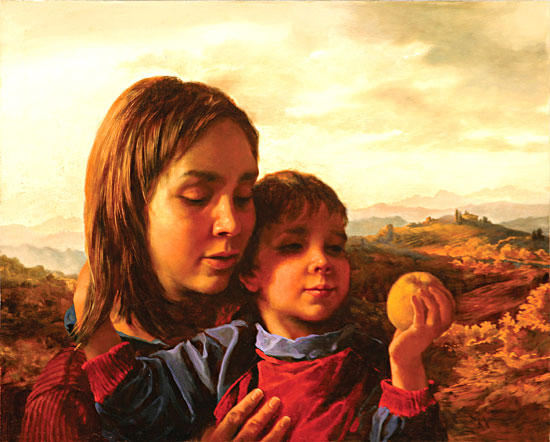
Apple oil painting |
You may be interested to know that artists from every state in the USA, every province in Canada, and at least 105 countries worldwide have visited these pages since January 1, 2005.
That includes Ellen Kirk who wrote, “Not only do you take your vodka straight, but at room temperature. And don’t forget to enjoy the ice cream. They are justly proud of it.”
And also Steadman Uhlich who wrote, “Your letters are written as if they come from an old and trusted friend. I also like the sense of being there with you that comes from your details and descriptions of the art, the venues, the sights, the techniques observed, and even the sounds.”

